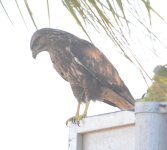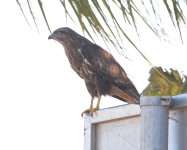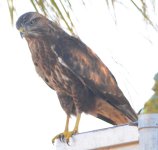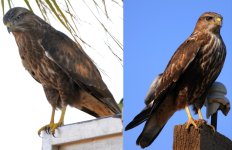Earnest lad
Well-known member
I spotted this bird by the roadside, 15th December 2023, and managed to fire off a few shots. I am very poor with raptors. I imagine it is a Buzzard species, although I am not certain. I understand the Steppe Buzzard is found in this area (Sharm El Sheikh) . To me this bird seems slimmer than a typical Buzzard one might see in the UK. However I could be wrong here. Could this be Steppe Buzzard please? Or maybe something else? Perhaps the photos don't permit conclusive id. I do have quite a few more photographs, but they are all similar. I didnt get a flight shot though.











